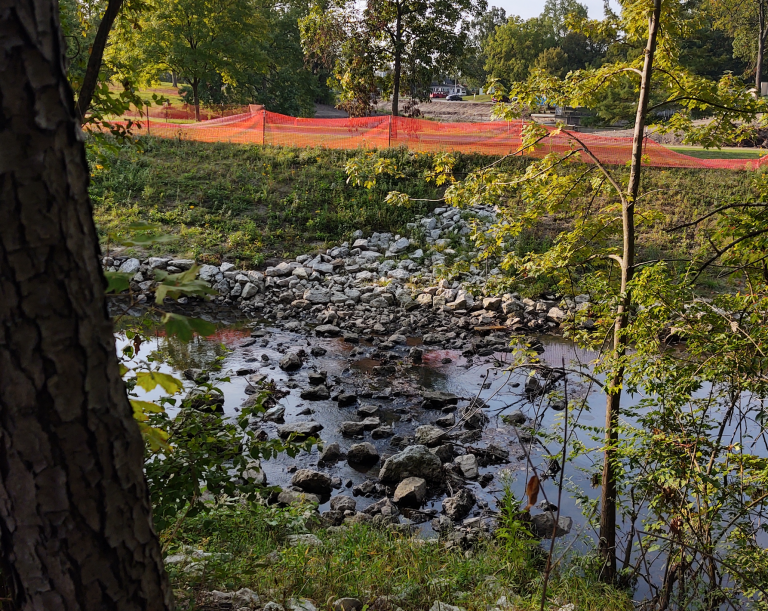The Urbana Park District and the Illinois Department of Natural Resources (IDNR) recently completed the first phase of a restoration project at Crystal Lake Park to help restore habitat, native plants and improve the health of fish.
The restoration project is part of a long-term effort to clean up the Saline Branch (which flows through the park and includes Crystal Lake), after an ammonia spill damaged water quality and caused a fish kill in 2002. The project aims to improve the habitat for fish and birds like kingfishers, and to increase diversity in native plants.
This summer, workers completed the first phase of the project. An additional $33,000 in funds provided by the U.S. Fish and Wildlife Service will pay for remaining work to remove invasive plants and incorporate native plants by the end of this year.
One of the main goals of the project is to help restore fish diversity after the loss, spanning ten miles, 18 years ago. Ted Gray is an engineer and eco-hydrologist working on the project.
“With a fish kill, you pretty much have a far-reaching loss of fish species through the area,” Gray says. “We do have some desirable fish species already using our project area, even before our project was implemented. We’re hoping that we’ll have increased diversity and maybe increased numbers of those types of desirable fish species.”
The team will be measuring the health of the fish to track how they respond to the restoration in the coming years.
Gray says the project will also help prevent water pollution from urban or agricultural runoff, through measures like rock riffles and deflectors, as well as addressing erosion along the stream slope. He hopes that these practices can be implemented in a more widespread basis across Central Illinois.
“These measures don’t resolve all those issues, but they do provide our aquatic life with more of a fighting chance to make it through those really difficult time periods when we have polluted events happening after a rainfall,” Gray says.
Derek Liebert, Superintendent of Planning and Operations at Urbana Park District, says he hopes the changes will provide a more beneficial park experience for Urbana residents.
“I’d just encourage people to come out and visit, see the work, come out and enjoy,” Liebert says. “We’ve created a really improved park visitation experience and improved habitat throughout the park.”

